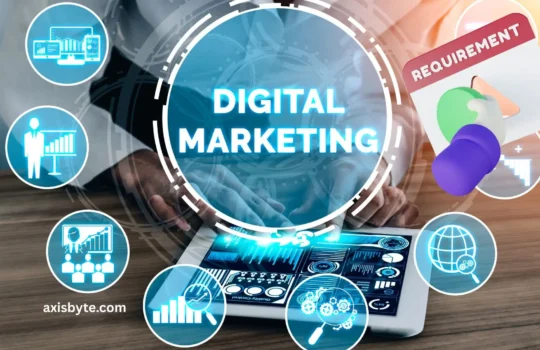Positioning is a crucial concept in marketing that helps businesses differentiate themselves from their competitors and establish a unique identity in the minds of their target audience.
It involves creating a distinct image, reputation, or identity for a product, service, or brand that sets it apart from others in the market.
In this article, we will explore the different types of positioning, how to implement it effectively, and its benefits for businesses.
What is Positioning?
Positioning is the process of creating a unique and distinct image, reputation, or identity for a product, service, or brand in the minds of the target audience.
It involves identifying the key attributes, benefits, and values that differentiate a brand from its competitors and communicating them effectively to the target audience.
Positioning is not just about promoting a product or service, but about creating a perception in the minds of the target audience that sets it apart from others in the market.
Types of Positioning in Marketing
There are several types of positioning that businesses can use to differentiate themselves from their competitors. Some of the most common types of positioning include:
- Product positioning: This involves positioning a product based on its features, benefits, and attributes.
- Service positioning: This involves positioning a service based on its quality, convenience, and reliability.
- Brand positioning: This involves positioning a brand based on its values, personality, and reputation.
- Attribute positioning: This involves positioning a product or service based on a specific attribute or feature.
- Benefit positioning: This involves positioning a product or service based on the benefits it offers to the target audience.
How to Implement Positioning Effectively
Implementing positioning effectively requires a deep understanding of the target audience, their needs and preferences, and the competitive landscape. Here are some steps businesses can take to implement positioning effectively:
- Identify the target audience and their needs and preferences
- Conduct market research to understand the competitive landscape
- Identify the key attributes, benefits, and values that differentiate the brand from its competitors
- Develop a unique and compelling value proposition
- Communicate the value proposition effectively to the target audience through marketing campaigns and messaging
Why is Positioning Important in Marketing
Positioning offers several benefits to businesses, including:
- Differentiation: Positioning helps businesses differentiate themselves from their competitors and establish a unique identity in the minds of their target audience.
- Brand awareness: Positioning helps businesses create awareness and recognition for their brand.
- Customer loyalty: Positioning helps businesses build customer loyalty by creating a perception of value and uniqueness in the minds of their target audience.
- Competitive advantage: Positioning helps businesses gain a competitive advantage by differentiating themselves from their competitors.
- Enhance product or service perception: Positioning can enhance the perception of a product or service by highlighting its unique benefits and features.
- Create an emotional connection: Positioning can help businesses create an emotional connection with their target audience by aligning their brand with their values and beliefs.
- Support business goals: Positioning can support business goals by helping businesses to attract new customers, increase revenue, and expand into new markets.
- Provide a framework for marketing strategy: Positioning provides a framework for marketing strategy by identifying the target audience, unique value proposition, and marketing messaging.
- Help businesses adapt to change: Positioning can help businesses adapt to changes in the market, consumer preferences, and technology by repositioning themselves to stay relevant.
Types of positioning strategies with examples
Here are some types of positioning strategies, along with examples
- Characteristics-based positioning: This type of positioning emphasizes the unique features of a product. For example, Apple is known for its innovative and user-friendly products.
- Pricing-based positioning: This type of positioning focuses on the affordability of a product. For example, Walmart is known for its affordable products.
- Quality-based positioning: This type of positioning highlights the quality of a product. For example, Tesla is known for its luxury and high-quality electric cars.
- Customer needs positioning: This type of positioning focuses on the needs of the customer. For example, Starbucks is known for its high-quality coffee and beverages.
- Differentiation strategy: This type of positioning focuses on differentiating a product from its competitors. For example, Ryanair is known for its low-fare airline.
- Cost leadership strategy: This type of positioning focuses on reducing costs and offering products at the cheapest price. For example, Asda is known for its affordable products.
- Focus strategy: This type of positioning focuses on a specific niche or market. For example, Ben & Jerry’s is known for its socially and environmentally conscious initiatives.
- Competitive positioning: This type of positioning focuses on comparing a product to its competitors. For example, Microsoft and Apple are known for their innovative and user-friendly products.
- Social media positioning: This type of positioning focuses on using social media to promote a product. For example, Oatly uses social media to promote its playful and irreverent brand personality.
- Convenience-based positioning: This type of positioning focuses on the convenience of a product. For example, Uber and Lyft are known for their convenient ride-sharing services.
- Image positioning: This type of positioning focuses on the image or reputation of a product. For example, Chanel is known for its luxury and high-quality products.
- Feature positioning: This type of positioning focuses on the features of a product. For example, Apple is known for its innovative and user-friendly products.
- Benefit positioning: This type of positioning focuses on the benefits of a product. For example, Uber and Lyft are known for their convenient ride-sharing services.
Factors to Consider in Positioning
When developing a positioning strategy, several factors need to be taken into account:
Target Audience
Understanding the needs, preferences, and behaviors of the target audience is crucial for effective positioning. By identifying the specific segment of the market they want to target, companies can tailor their positioning message to resonate with that particular group.
Competitor Analysis
Analyze the strengths and weaknesses of competitors to identify gaps in the market that can be exploited. By positioning their offerings in a way that addresses these gaps, companies can carve out a unique space for themselves.
Unique Selling Proposition (USP)
A USP is a distinctive feature or benefit that sets a product or service apart from its competitors. It is a key element in positioning, as it helps to communicate the unique value that a company offers to its customers. Whether it’s superior quality, competitive pricing, or innovative features, a strong USP can be a powerful tool in positioning a brand.
Brand Image and Personality
The brand image and personality play a crucial role in positioning. Companies need to define their brand attributes and ensure that their positioning aligns with these attributes. Whether it’s being perceived as reliable, innovative, or environmentally friendly, the brand image should be consistent across all marketing efforts.
FAQs
The primary goals of positioning are to:
- Differentiate your brand or product from competitors
- Create a unique identity in the minds of your target audience
- Establish a clear and compelling value proposition
- Build brand awareness and recognition
- Drive customer loyalty and retention
- Support business goals such as revenue growth and market expansion
The purpose of proper positioning is to:
- Clearly define your brand’s identity and value proposition
- Communicate your unique benefits and differentiators to your target audience
- Create an emotional connection with your target audience
- Build trust and credibility with your target audience
- Differentiate yourself from competitors and establish a competitive advantage
- Drive business growth and revenue through effective marketing and sales efforts
A positioning statement is a concise statement that defines your brand’s unique value proposition and differentiators. The goals of a positioning statement are to:
- Clearly define your brand’s identity and value proposition
- Communicate your unique benefits and differentiators to your target audience
- Guide marketing and sales efforts to ensure consistency and effectiveness
- Provide a framework for product development and innovation
- Help establish a competitive advantage and drive business growth
The goal of product positioning is to:
- Create a unique and compelling value proposition for your product
- Differentiate your product from competitors and establish a competitive advantage
- Communicate your product’s benefits and features to your target audience
- Drive product adoption and sales through effective marketing and sales efforts
- Support business goals such as revenue growth and market expansion
Conclusion
Positioning is a powerful marketing concept that helps businesses differentiate themselves from their competitors and establish a unique identity in the minds of their target audience.
By understanding the different types of positioning and how to implement it effectively, businesses can create a competitive advantage, build customer loyalty, and drive growth and success.










